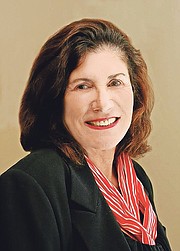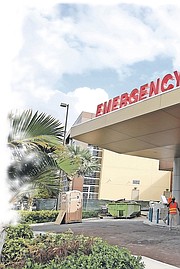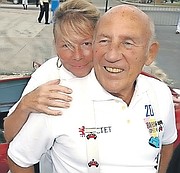PRINCESS Margaret Hospital is in poor financial health. And that is being kind.
You can argue all you want that a public hospital doesn’t need to be healthy. It just has to serve those who are also suffering from poor health or need medical attention and cannot afford private hospital services.
You could argue that, of course, and you would not be entirely wrong. But what you would not be accounting for is what happens when a hospital is broke, shored up only by the already strained and breaking public purse and a foundation faced with a Sisyphean task, rolling a boulder uphill daily only to watch it roll back down just to start all over the next day?
What happens then? Just look at Princess Margaret Hospital (PMH) in Nassau and you’ll see. It will break your heart. A patient on a gurney, in pain, hurting, shivering, waiting for a bed to open up and a blanket to keep warm, but there is a shortage of beds and there is no blanket. He continues to shiver. And hope. If prayer is his medicine, he will keep praying.
A company with compassion donates 100 blankets and they disappear in days. A patient dies and the blanket goes with him to the morgue or it is too badly soiled to be washed and re-used or someone is discharged and walks out with it. It happens all the time.
Shortage of blankets is the small stuff.
What happens when the mammogram machine breaks down? Or X-ray equipment must be repaired or replaced, dialysis equipment goes bad, more incubators have to be purchased or mold fills rooms and mice take up residence along with homeless patients that a former minister of health said cost the system $18,000 a day, or $6.4m a year? Those homeless who call PMH home, brought in years before by family to be treated, just stayed. Family could no longer deal with whatever sent them to the hospital or they have no place to go and they simply stay where there is food and a roof. They do small errands for staff.
Again, more small stuff. Here’s the big picture.
It costs $216m a year to operate PMH, yet the hospital only takes in $10m in revenue. It’s owed more than $800m by patients who turn to it for services but don’t pay, even if they can. Every year, there are 60,000 patient visits, 30 percent from injury, only a fraction of them ever paid, with 86 percent totally unpaid, ignored, by those who think medical care like sunshine should be free for all in a country that celebrates its freedom and is about to spend a whopping amount on marking its 50th year of independence.
Despite the frighteningly unhealthy state of the nation’s most used medical facility, there are those who harbour a pie-in-the-sky vision of a new hospital. Why not chuck the old and just let’s build new and modern and show off what we can do in The Bahamas, they say? Here’s why not. Hospital construction costs are huge. It would take a minimum of $650m – and that is a very low and conservative estimate – to build a new hospital with the capacity of PMH. Add to that the annual operating cost – remember $216m with a revenue of $10m – and what you come out with is a need to find $1.7bn in the next five years for a facility that generates $10m a year.
Glum as it sounds, there is some good news. The PMH Foundation, which has always tried to meet the needs by raising money for those blankets and incubators, wheelchairs and that dialysis equipment, is re-energized with new leadership and a few new board members. Many others, including Nancy B Kelly (who co-founded the still active PMH volunteers, the Yellowbirds), Inga Bowleg and chairman emeritus Richard Demeritte, gave so much of their time.
Now the board is in the hands of Dr Magnus Ekedede, chairman, with Dr Kenneth Kemp (Bahamas Foot and Ankle and author of The Tribune column The KDK Report), vice chairman and others who say the medicine is bitter, but they will find a way to swallow it. They will seek grants and the kindness of strangers. They will beg if they need to, not for themselves, but to raise funds for those blankets so the next patient lying in a hallway, suffering, cold, waiting for a bed, can stop shivering.
LAWYERS ARE SINGING THE PRAISES OF TWO JUSTICES
SIR Brian Moree, Justice of the Court of Appeal, and Ian Winder, Chief Justice, for their swift and long overdue work streamlining the process of handling civil cases. New regulations are expected to take effect next month.
WHILE RACING CAR BUFFS ARE MOURNING LADY SUSIE MOSS
FROM the British Racing Drivers’ Club, these words on the passing of a woman of spirit, tenacity and vitality, a wife who loved her husband unconditionally and during Sir Stirling Moss’s post-driving days kept his legacy alive.
Now, it is she who we in The Bahamas mourn, a woman we remember with such fondness, her smile like sunshine, her warmth enough to warm you on the coldest day.
“In his autobiography, Stirling Moss My Racing Life, written in conjunction with Simon Taylor and published by EVRO in 2015, Stirling went on record about Susie’s role in his life as follows: ‘I simply could not operate without Susie. She looks after me, organises me, travels with me on all my working trips around the world, knows where I have to be at any time, and never loses her sense of humour, even if I lose mine. She makes sure that my life works. Susie and I have been together for 38 years, married for 35, and she has never stopped being the best thing that bever happened to me’.”
Even in his 80s, such was Stirling’s enduring fame that he was still receiving on average 20 letters a day. Susie answered all of them. As a couple, Stirling and Susie were motor racing royalty, welcomed wherever they went and, by their charm, captivating generations of motor racing fans who were too young to have seen Stirling in his prime as one of the greatest Grand Prix drivers of all time. In 2008, 60 years after Stirling became a member of the BRDC, Susie was invited to become an honorary member of the club which was a source of particular pleasure not only to Lady Susie herself but also to her husband who invariably wore a BRDC badge at all the many events and functions which they attended.
Sir Stirling and Lady Moss graced The Bahamas Speed Week Revivals and Stirling, who built a house on Eastern Road, surprised the young Karter’s with his knowledge of their machinery while Susie watched his every move and ensured he was behaving himself!
Sir Stirling’s fame as a racing driver will endure for all time and alongside him in the memory will be Lady Moss, his most gracious, kindest and nicest wife about whom never a harsh word was heard.







Comments
Flyingfish 1 year, 1 month ago
I think a robust expansion of NHI as well as a mandatory enrollment of individuals without private health insurance can be used to cover the short fall. Perhaps a fee can be charged that goes directly Public Health services.
Sign in to comment
Or login with:
OpenID